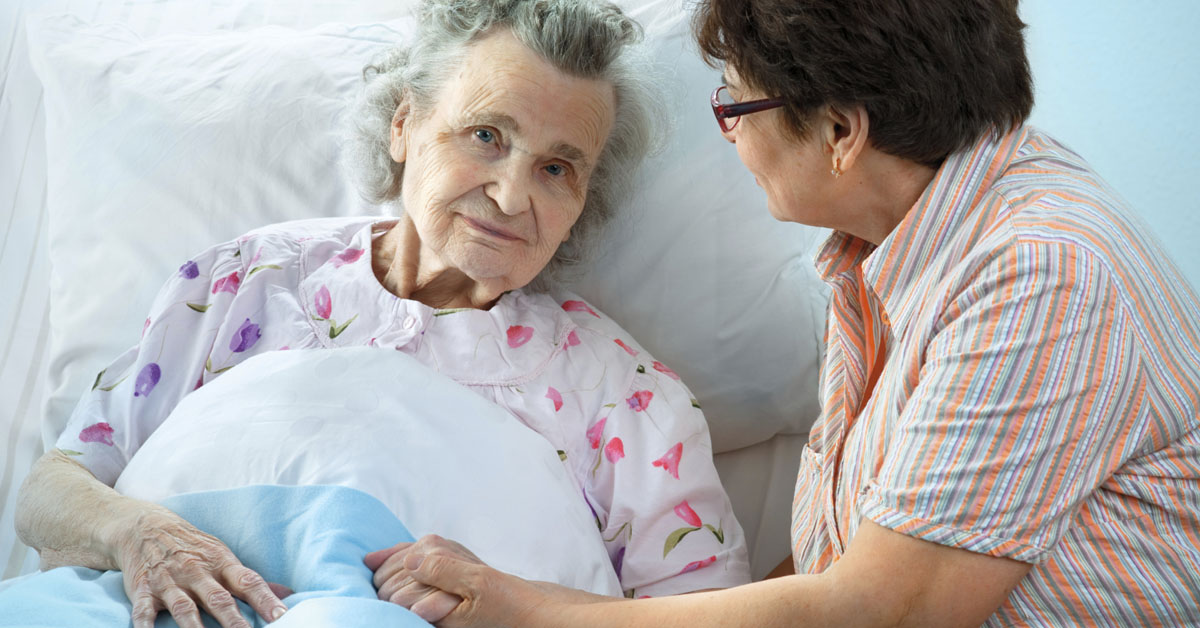
Why Would a Hospice Patient Want Rehabilitation?
It may sound paradoxical, but physical therapy and other rehab can be an important part of hospice services. People in advanced disease states tend to experience progressive levels of debility. This includes high levels of functional loss, increased dependency on family for activities of daily living, and mobility limitations. The progressive debility, in turn, contributes to a number of problems related to quality of life, and quality of life is a primary concern of hospice.
The Effects of Progressive Debility in Hospice
The concern for hospice is that progressive debility and a sense of being a burden correlates with patient interest in physician-assisted death.1 Physical strength, hours in bed, and the ability to do what one wants have been identified as indicators of quality of life in hospice. 2 New physical disability at the end of life affects many aspects of daily living. It results in increased depression, increased caregiver burden, lowered quality of life, and increased risk of having to move to an inpatient facility.3
What is Palliative Rehabilitation?
Palliative rehabilitation is defined as the process of helping a person reach the fullest physical, psychological, social, vocational, and educational potential, consistent with his or her desires and life plans.1 It can involve physical, occupational, and/or speech therapy. For hospice patients, energy levels can wax and wane, and physical and cognitive functions can change dramatically on a daily basis. For this reason, palliative rehabilitation shifts plans fluidly and responsively according to each patient’s daily situation.
Does Palliative Rehabilitation Really Work?
When a hospice patient demonstrates rehab potential, palliative rehabilitation seems to prove beneficial for most patients. In one study, 63% of patients found a particular palliative rehabilitation program effective.4 Across multiple programs, more than sixteen published studies have measured a range of worthwhile benefits.1
Proven Benefits of Palliative Rehabilitation
- Improve mobility
- Restore motor skills
- Boost cognitive function
- Decrease fatigue
- Improve independence with activities of daily living
- Reduce the burden of care on family caregivers
- Reduce pain
- Reduce anxiety
- Reduce other distressing symptoms such as dyspnea, constipation, and leg edema
- Improve mood
- Improve coping
- Improve satisfaction with care
- Increase general sense of wellbeing
- Improve quality of life
References:
- Montagnini M, Javier NM, Mitchinson A. The Role of Rehabilitation in Patients Receiving Hospice and Palliative Care. Rehabilitation Oncology. 2020 Jan 1; 38 (1): 9-21.
- Jordhoy MS, Inger Ringdal G, Helbostad JL, Oldervoll L, Loge JH, Kaasa S. Assessing physical functioning: a systematic review of quality of life measures developed for use in palliative care. Palliative Medicine. 2007 Dec; 21 (8): 673-82.
- Curtis EB, Krech R, Walsh TD. Common symptoms in patients with advanced cancer. Journal of Palliative Care. 1991 Jun;7(2):25-9.
- Yoshioka H. Rehabilitation for the terminal cancer patient. American Journal of Physical Medicine & Rehabilitation. 1994 Jun; 73 (3): 199-206.





